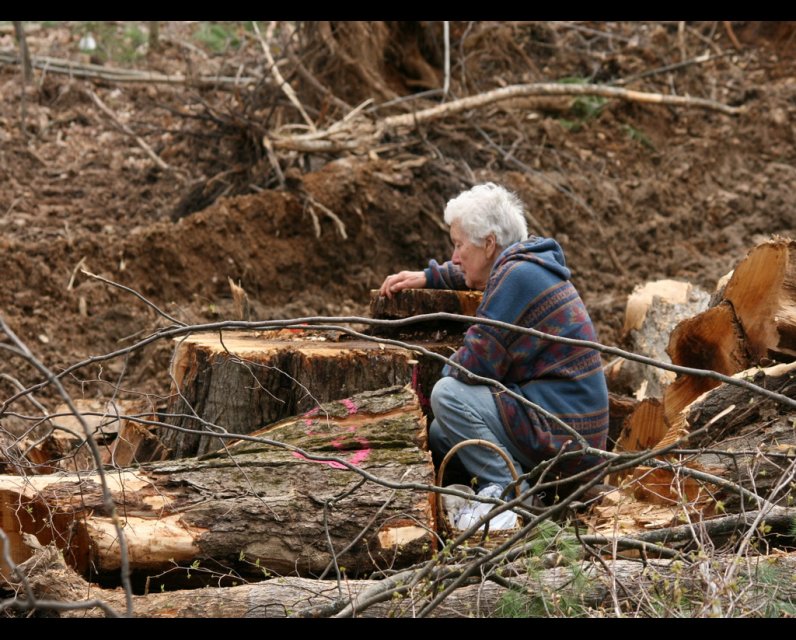Unpublished Opinions
Paul is a local high-tech executive, field naturalist, and is well-known as an environmental spokesperson. He is also an active supporter of indigenous rights and respect for traditional aboriginal values which includes everyone's responsibility for stewardship over our environment.
Black Maple Killed for TFDE was larger than Ontario's Oldest Maple

Responding to Citizen Article
The Ottawa Citizen today reported on Ontario’s oldest Maple tree being “discovered” in Peterborough.
http://www.ottawacitizen.com/technology/World+oldest+known+sugar+maple+g...
The Peterborough tree has a diameter of 28” and is smaller than many found in the South March Highlands (SMH), including the rare Black Sugar Maple that the City killed in 2010 because it stood in the path of the $80 M Terry Fox Drive (TFD) road extension.
That ancient Black Maple stood over 75 feet tall, had a circumference of 10'9" (328 cm) and a diameter of 43" (109 cm). Botanist Martha Webber counted annual rings to verify the age to be well over 200 years old and confirmed that it was vigorous and healthy prior to being destroyed.
Webber counted these rings in field conditions with tears in her eyes and she did not have a microscope necessary to count micro-rings. So it is quite possible that the City of Ottawa killed Ontario’s oldest Black Maple tree to make way for development in the SMH.
Old trees are very important, not just because they are beautiful, but also because they have strong genetics that help combat disease as well as invasive species. In addition to contributing to Ontario's bio-diversity, ancient trees also contribute to our natural history as their growth patterns are faithful records of climate change. They deserve far more respect than they get from City of Ottawa planners.
The article cites Daniel Brunton who notes that “Trillium Woods” likely contains equally old sugar maples. His reference to Trillium Woods can be misleading for many people who may confuse the larger forest area actually being referenced by Brunton to the smaller portion of Trillium Woods that is owned by the City.
This confusion arises because City Councillor Marianne Wilkinson is prone to referring to “Trillium Woods” as being owned and protected by the City. However only the Monk Conservation Forest portion of Trillium Woods is owned by the City - i.e. the portion of Trillium Woods that is east of Goulbourn Forced Road (GFR).
The full extent of Trillium Woods actually extends westward from GFR across the entire southern edge of TFD to where it meets the railway crossing. It used to extend south into Beaver Pond Forest before that area was clear cut by Urbandale (where it also contained several hundred year-old trees). Trillium Woods also extends northward across TFDE to meet the southern portion of what is now known as the SMH “Conservation Forest”. About 1/3 of the SMH Conservation Forest area is also owned by the City - the rest is unprotected from development.
The Citizen article omits to mention that most of what remains fo Trillium Woods is going to be destroyed by Urbandale who owns the development area south of TFD. It could be purchased from Urbandale for protection, but instead the City prefers to spend taxpayer money on re-development in Landsdown park, or digging a hole for the LRT downtown. Both those boondoggles cost considerably more than protecting the SMH from further development.
Brunton, who did most of the City’s botanic studies in the SMH, is well aware of the fact that the largest trees in the SMH are located within a couple of hundred feet of both sides of TFD which cut thru the middle of the forest.
In fact a massive Maple still remains within 75 feet of the road that was saved when the Coalition to Protect the SMH prevented the western diversion of Shirley’s Brook that the City had originally planned to implement beside the road. That tree is probably in the 300-year age range too.
Recently the City of Ottawa disclosed that it wants to put a road thru the conservation forest at Stoney Swamp so that they can extend the southern end of TFD thru to the 417 and unlock massive development south of Kanata. Watson's environmental track record appears to favour killing important natural areas whenever development is an option.
If Watson were mayor of Peterborough, no doubt that old Peterborough maple would be long gone and have a road and subdivision overlaid on it by now.



Comments
Be the first to comment